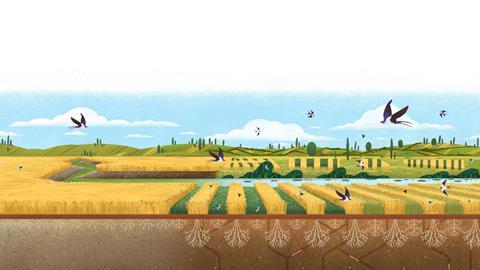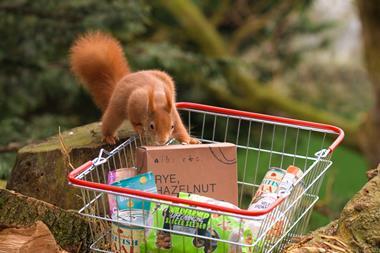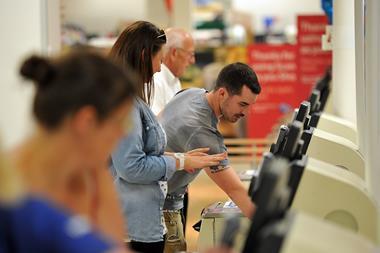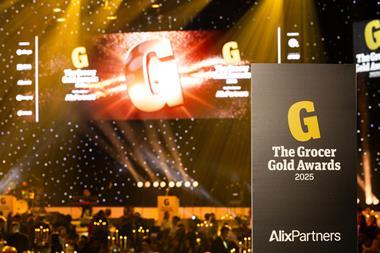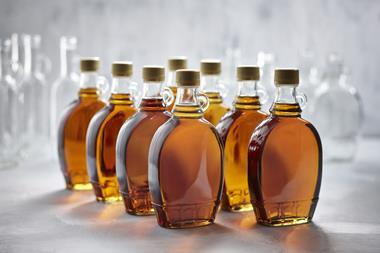Fast forward to 2030. Cereals company Regenerate has built a successful business with its Climate Crunch range of cereals, made from nature-friendly peas mixed with diverse wheat varieties. Find out how this approach could address the impact of unvaried diets on the environment.
“PEAS?” The boy folded his arms, as if to underline the incredulous high pitch to his voice. He grinned at his quieter classmates, all decked out in white coats and hairnets as they shuffled around the factory’s machines.
“Yes Jasper, peas.” His teacher took a deep breath. “Now, can we listen to Mrs Jones?”
The factory manager also folded her arms and turned to address the boy. “That might be shocking to you, but actually lots of cereals are made from peas now. You just didn’t realise because they taste so nice. There you go, try some for yourselves.”
She took a step back as a colleague arrived with a large bowl of cereal. 30 pairs of hands stretched out to scoop the nuggets and eat them.
“Ten years ago, back in 2020, most cereals were made just of wheat or oats and the lack of diverse ingredients on our farms and diets was having a negative impact on the environment. Can anyone tell me what fields looked like back then?”
A voice piped up from the back of the crowd. “Were they all big squares of yellow, sir?”
“Exactly that. Our diets were a bit boring back then. In fact, across the world, people got 60% of their calories from just four crops – wheat, plus rice, corn and potatoes. Our unvaried diets, like the packs of cereal we used to eat, meant that farmers often grew the same old thing, because they tend to grow what the market demands. This lack of diversity amongst the crops meant that we were also losing so many species of other plants and animals. It reduced the resilience of the whole food system.”
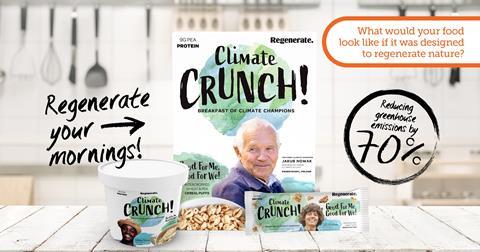
Designing food to prioritise nature
She pointed up to one of the photos lining the walls of the factory, showing an aerial photo of a landscape of vast fields.
“You’re right that they were huge fields too – a lot of hedgerows had been cut down to let massive machines in, and many more chemicals have been used over the years. Although this helped produce lots of crops, our old food system generated greenhouse gases and reduced biodiversity. Now, Jasper, what year were you and your classmates born in?”
“2020”
“So, around the time you were all just learning how to eat solid food, some people came up with an idea called a circular economy for food, a way to keep us all fed while still helping nature thrive. In many ways it was about bringing back traditional ways of thinking about farming. One part of this new plan is changing the way we design food so that change can happen in the fields. This is where we at Regenerate came in.”
Read more:
-
No food left behind: upcycling is part of a plan to help nature thrive
-
Supermarkets sign up to ‘unprecedented’ collaboration on climate change
-
Frozen pea demand soars amid cost of living crisis
-
The future of food is circular: how brands can help regenerative farmers alter the shape of things to come
She smiled as Jasper grabbed another fistful of cereal from the large bowl between them and continued: “We heard about something called the Big Food Redesign Challenge, which helped food companies make some changes to their products which meant the farmers could produce more diverse ingredients, in ways that helped them take even better care of the land.
We thought this was a great idea and that’s how we came up with the idea for Climate Crunch.
We used to make cereals from just one type of wheat. But then we realised that we could also use peas and make cereals that would help play a role in tackling climate change by helping build healthy soils.”
The Big Food Redesign
The Circular Design for Food framework encompasses guidance on product concepts, packaging, and four-ingredient selection and sourcing categories. Manufacturers and retailers can maximise the positive impact of their products by incorporating as many of these principles as possible into their designs, enabling them to be:
Diverse
Businesses can incorporate a broader range of ingredients and varieties in their product portfolios to increase genetic diversity of crops and livestock, and therefore build food supply resilience.
Lower Impact
Some crops and animals have less of an impact on the environment than others. Peas, beans and lentils, for example, draw nitrogen from the air into the soil, nourishing the land and reducing (or even entirely avoiding) the need for synthetic fertilisers.
Upcycled
These are ingredients taken from food by-products that would otherwise not have been used for human consumption or may have been wasted entirely. Using upcycled ingredients alleviates pressure and maximises return on land, energy and other investments needed to grow food.
Regenerative
Food can be produced in ways that have positive outcomes for nature. Those outcomes include, but are not limited to, healthy and stable soils, improved local biodiversity, and improved air and water quality. Ways of farming that may result in these outcomes include regenerative agriculture, agroecology, organic, permaculture, agroforestry (including silvopasture) and conservation agriculture.
Choosing ingredients that work hard in the fields
“Peas are like little miracle crops – they suck down nitrogen into the ground, which can help make the soil healthy and might mean that the farmer doesn’t have to use as much fertiliser. The more peas we can use in our products, the more peas the farmer can confidently plant, knowing they will be able to sell their harvest.”
“Now, can anyone tell me another reason why growing peas might be good for the farmers? Actually, is anyone part of a farming family?”
A girl shot her hand high into the air. “I am! My mum and dad grow potatoes.
“Great! And what do you think would happen if they were growing and selling another ingredient at the same time in the same field too?”
“Um, they’d make more money?”
“Exactly right! You lot are good at this. Your family would have two sources of income rather than one. The other great thing about planting crops between other crops is that it covers the ground, which can suppress weeds, support the soil structure, provide habitats for biodiversity and other benefits.”
“So the more peas we can buy from those farmers, the more they can manage their land in ways that allow space for animal habitats, and enrich the soil, all the while producing enough food to keep us all well fed. A bit like the Circle of Life in the Lion King, I bet you’ve all seen that?”
The girl moved forward, pointing to one of the big photos on the wall. “Who’s that guy?”
“That guy is Jakub, he’s one of the farmers that supply our peas. Our farmer partners appear on all our packs of Climate Crunch because our customers like to see where all the ingredients of their food come from. They buy lots of our products because they know they are making a positive difference to the world while they’re eating their breakfast”.
Are you ready to make this vision a reality?
The Ellen MacArthur Foundation and Sustainable Food Trust, supported by the People’s Postcode Lottery, will launch the Big Food Redesign Challenge at the end of May 2023. This will be an opportunity for all food manufacturers, brands and retailers to join a collaborative journey towards creating a circular economy for food. Register here for updates.
Read about the five actions companies can take to make nature-positive food the norm.
Watch Ellen MacArthur and colleagues discuss how re-designing food can help tackle climate change and biodiversity loss.







